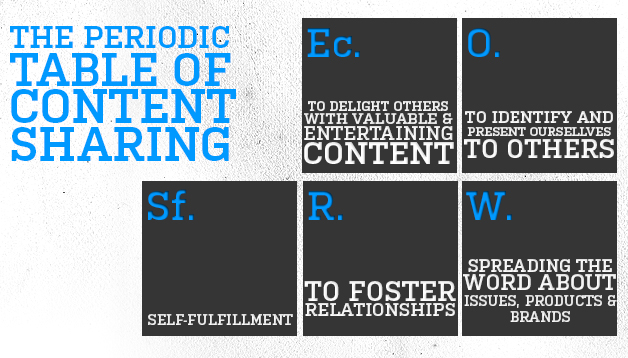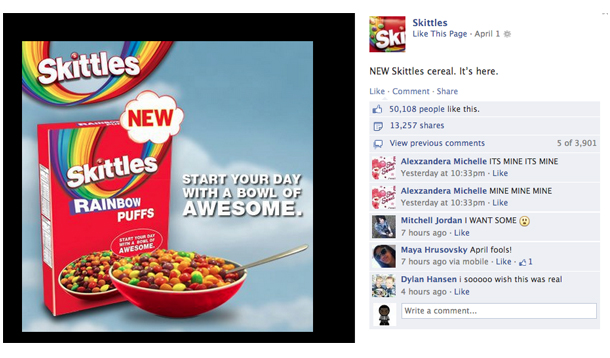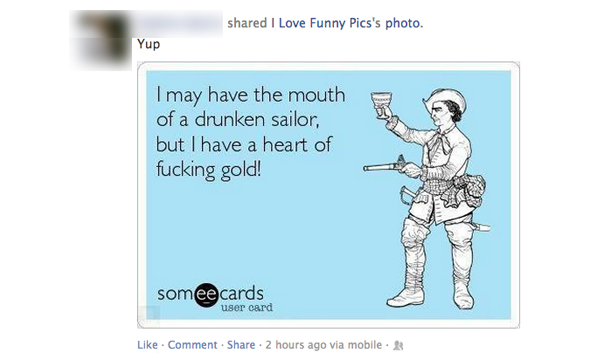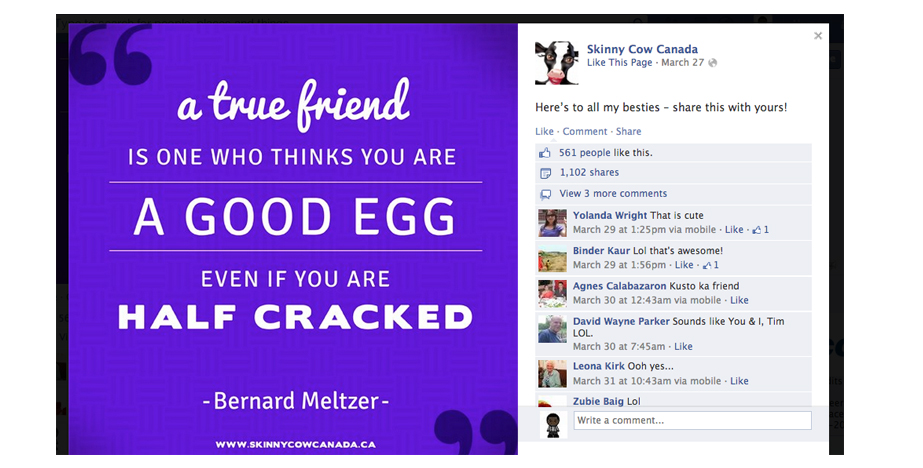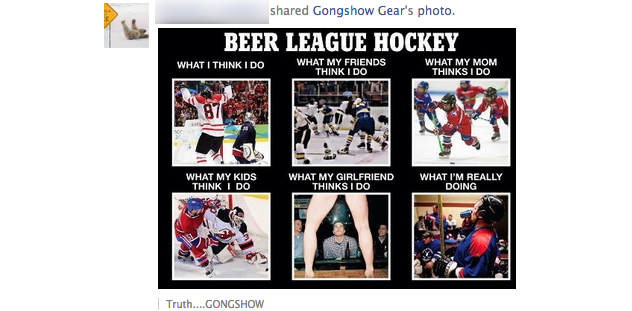You already know that Facebook is an effective marketing channel and can drive meaningful results all the way to conversion. But that’s not enough to actually understand the core value in which you can utilize this channel to take your marketing efforts to the next level. Instead of just knowing that Facebook can lead to conversion, you need to know how to drive that action.
When I first started helping businesses with their Facebook pages 4 years ago, it used to take a while for me to find out exactly what would drive likes, shares, comments and ultimately, success. Since then, not only have I figured out how to get brands 1000’s and 1000’s of interactions on their content, but I’ve figured out how to do it on a consistent basis through trial and error.
When I first started helping businesses with Facebook, I was quickly able to help them generate a handful of likes on their actual page but eventually be met with disappointment. The likes would flatline and the content would fall flat. The status updates would go up and they would gain a like or two here and there but it wasn’t significant enough to claim real results.
But instead of accepting the results for face value, I’ve spent the last few years learning everything I could about Facebook, Psychology and applying it to how my friends and fans of brands use Facebook. This has led to me identifying a few key insights that cause users to like, comment and share. These insights were further confirmed when I found a report from the New York Times that studied the psychology of sharing.
If you want more engagement on your Facebook posts, here’s what you need to know:
The Psychology Behind Sharing Content
Understanding the motives behind sharing content and stories is essential when you are developing and creating a marketing initiative. In today’s world, digital storytelling is quickly becoming an integral part of every businesses marketing mix. The idea of sharing content is something that affects all of us. Whether it’s as a marketer or simply as a human being. We often share without understanding why. We don’t think about the reasons related to the sharing of gossip, ideas, blog posts, selfies or captivating stories. We just do it. But why?
Content has a powerful subconscious effect on every part of our lives, without even thinking about it; we make decisions to share certain things with our networks for one reason or another. This study from the New York Times identified five key motivators for sharing content. These include:
- to delight others with valuable & entertaining content,
- to identify and present ourselves to others,
- to foster relationships,
- for self-fulfillment,
- for spreading the word about issues, products & brands.
Recognizing that these are the motivations of sharing content and stories; marketers must commit to creating content worth sharing. These insights into human motivation should be studied and known by everyone proclaiming to be a social media expert. Social media is about the distribution and sharing of stories, thoughts, ideas and content – not knowing the reason behind this distribution is information that shouldn’t be ignored.
How to Take Advantage of these Motives
Delight with Entertaining & Valuable Content
The easiest way into a customers heart is through happiness. If you can put a smile on your customers heart you can almost sell them anything. It’s a known fact throughout the sales industry and is the reason they try to delight you with coffee and a joke when you walk on the car lot. These little gestures are all meant to make you smile. Because if you can make a customer smile, you increase the chances of selling them something.
Entertaining your customers doesn’t always mean making them laugh out loud and slap their knee in hysteria. That’s not the case at all. Entertaining your fans on Facebook means providing them with content that is relevant, timely and engaging. It means providing them with content that ties into their interests while still communicating your brands story. For example, it’s entertaining to see a brand like Skittles share the April Fools day joke above the same way it’s entertaining for EA SPORTS Madden NFL to share a content simply asking fans who they think should be the league MVP.
Beyond these ideas, another great tactic for creating viral Facebook posts is using reactive storytelling. Reactive storytelling is the combination of a top of mind idea and a brand relevant message that is easily shared and provides your fans with timely entertainment. An example of this was when Oreo shared a status update about the Superbowl Blackout and “Dunking in the Dark” during Halftime when the SuperDome had a power outage.
Outside of entertaining your fans is embracing the idea of ensuring that the content you share is always valuable. The value of the content you share can be measured in the feedback from your audience. If you’re sharing posts that are driving a lot of positive engagement; you can assume that the content is considered valuable to your audience. An example of valuable content is when a brand like LuLuLemon shares a tip or trick on living a healthy lifestyle. They know their audience and they know their story. The combination of those two elements create a valuable piece of content that their audience embraces.
To Identify & Present Ourselves to Others
It’s thought by many that social media has increased narcissism across the continent. At the end of the day, many people spend hours and hours projecting a life through social media in which they want their friends and families to believe they live. Whether it’s through the sharing of funny ecards to show that they have a sense of humour or changing their profile picture to a cartoon to support a charity; these actions are meant to present and identify ourselves with something bigger than us as individuals.
As marketers, we can look at this and understand the opportunity to provide customers with content that allows them to with the click of a mouse, demonstrate what they believe in. Furthermore, it gives marketers a chance to think about their audience a bit deeper and understand what it is they associate with. Is this target audience passionate about a vegan lifestyle? If so, share content celebrating it and there will be shares. Are they an audience in which they are very patriotic? If so, share something to celebrate their sense of pride and watch the post get spread beyond your expectations.
To Foster Relationships
Social media has provided us with an opportunity to be more connected with one another than ever before. We have access to each other 24/7, 365 days a year and the only thing stopping us from being connected is access to the internet. If you’re using social media, you have undoubtedly used it to stay connected with the people you care about. Social media allows us to foster and develop deep relationships. People want to share things that help facilitate the development of strong and authentic relationships.
In the update above, Skinny Cow Canada has shared an image that is focused around friendship. The quote is one that their target audience can relate to and the call to action associated with it brings forward the opportunity to foster a relationship. It reads: “Here’s to all my besties – share this with yours!” That simple call to action drives hundreds of their fans to then share it on the wall of their friends on Facebook as they further build and nurture their relationship.
As a brand, think about what content you can create that your audience will feel is worth sharing with their friends. If you’re targetting parents, think about what they would be willing to share on the wall of their kids. If you’re targetting students in university, think about what they would be willing to share with their classmates during exam time. Before you create your content think about the relationships that your content will help nurture.
For Self-Fulfillment
The majority of respondents in this study stated that they shared information because it allows them to feel more involved in the world. Meaning, they didn’t really have a motive for sharing certain things, they just shared things that they felt connected with their life and what they did. It was somewhat of an extension of themselves.
In many ways, that can be said for the majority of the content shared on social media. People share things that they feel a connection with. They share content that they get pleasure out of sharing. In a sense, they look for stories and ideas that relate to their own world views and share those that are aligned with them. This is why you see vegans sharing content about how horrible KFC is or why you see Fathers sharing quotes about how hard it is to see their little girls grow up. It’s an extension of their own lives and allows them to communicate their feelings with the click of a button.
While he has many faults, you can take some Lessons from Don Draper and apply them to this concept. In one episode of Mad Men, he’s quoted saying: “Advertising is based on one thing, happiness. And you know what happiness is? …It’s a billboard on the side of the road that screams reassurance that whatever you are doing is okay. You are okay.” And that’s what people want. They want to share things not for their friends. Not for their colleagues. But for themselves. So they can feel good about what they do, who they do it with and how they do it.
For spreading the word about issues, products & brands
When a person likes their brand on Facebook they typically do it because they well…Like you! That should be no surprise but for some reason, businesses are concerned that their fans don’t actually want to hear about their products or services. Blasphemy! Customers want to hear about your product but not 24/7. They want you to keep them up to date with changes, new features along with updates on deals and discounts.
Brands are a part of our culture. They are a part of our lives and we are surrounded by them everywhere we look. You probably have one on your back right now and are touching one with your hands. Sharing information about your brand is an easy way to take control of your story. The idea of consistently telling stories is one of the core beliefs of great content marketers which is why you need to tell the story attached to your brand. If not, the consumers will tell a story for you (see Willy Wonka meme above).
Conclusion
So there you have it. The psychology behind sharing and liking on Facebook. You should now be equipped to go out and consistently create and generate content that is worth talking about.
At first you might get caught sticking with what you know and avoiding some of these tricks but after the first few tries, you should be able to the difference in results. You will find more people sharing and more people liking. As a result, you will find your brand becoming a bigger part of the lives of your customers.
Do you know of any other ways to generate a handful of shares and likes on Facebook?


